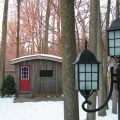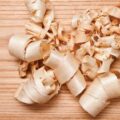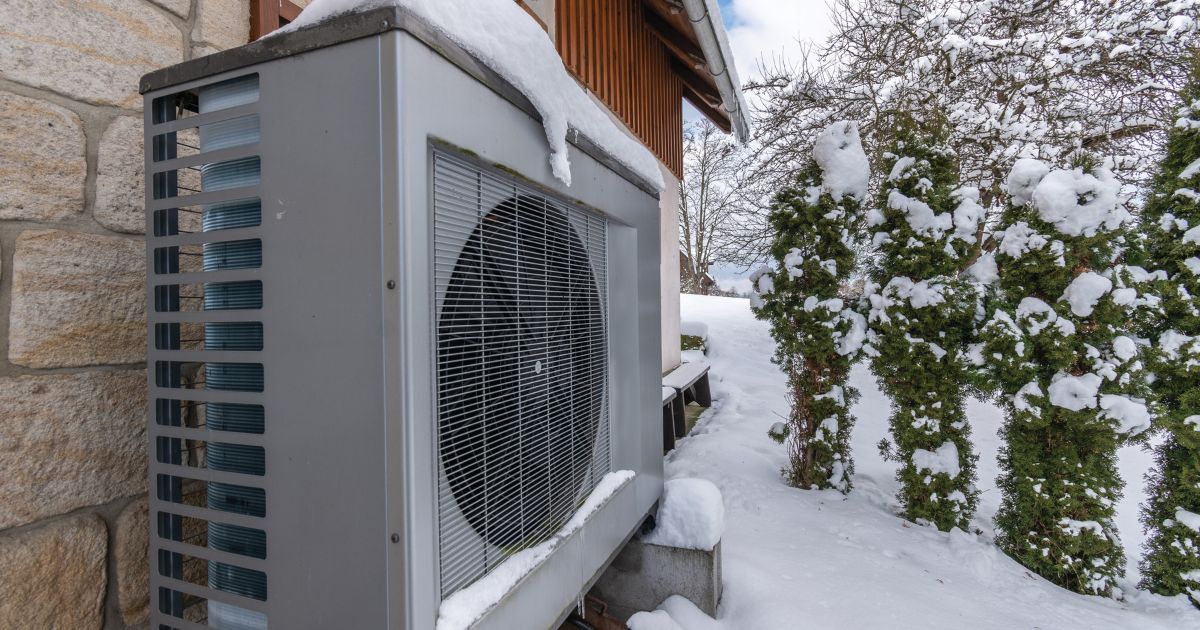Remove 100 years of ugly paint and varnish, and what looked like something fit for the trash is now beautiful in a completely new way. Successful wood refinishing can do this for you, and in my own work, I’ve found that success comes down to mastering three key steps.
Step 1: REMOVE THE OLD FINISH
When wood finishes need to be removed, it usually involves doing battle with thick coats of old, stubborn paint or varnish. The tools for doing battle here include chemical strippers and scrapers, plus a few other tools you might not have heard of before. The goal is to get off the bulk of old coatings in preparation for refinement in Step #2.
These days, chemical strippers are safer than the methylene-chloride-based strippers that were the only game in town for years. Modern strippers also work better because they stay wet and active long after
old-school strippers would have dried out and stopped working.

While a propane torch should never be used to soften old paint for scraping (see “Protect Against the Lead Hazard,”), heat can still be a useful tool for softening old finishes. One option uses a portable infrared lamp to heat paint so it gets soft but not so hot that toxic airborne lead vapours are released.
As effective as modern chemical strippers or heat lamps are, the finishes they soften still need to be scraped off. This is where most people take on more work for themselves than they need to, all because they don’t have the right equipment. If you simply grab the nearest putty knife, old butter knife or generic paint scraper, you’re probably at least doubling the time it will take to complete the stripping step. That’s because sharp, specialized scrapers are so much more effective, especially if you’re dealing with curved surfaces.
Cabinetmakers have traditionally used the widest range of scrapers of all professional woodworkers, and it’s
in their toolboxes where you’ll find the best scrapers for stripping curved surfaces such as mouldings and fancy architectural woodwork.

All cabinetmaking supply outlets carry a wide selection of scrapers. For stripping large, flat areas, pay the extra money for a carbide-tipped, two-handled paint scraper. The reversible carbide blade stays sharp almost
forever and can be replaced inexpensively when the time comes.
PROTECT AGAINST THE LEAD HAZARD
Until 1978, it was still legal for paint manufacturers to include lead in their paint formulations, and you’ll almost certainly encounter old lead-based paint as you strip woodwork. Lead paint can be stripped safely, but only if you understand the dangers and protect against them.
The main thing is to avoid anything that would release paint dust or lead vapours into the air, while also treating any scraped and stripped goo as toxic waste. Lead test kits are available if you’d like to know for sure if paint does contain lead before you start, though understand that the lead can be present in lower layers of paint that superficial testing might not encounter.

Never sand paint or use the flame of a torch to soften old paint. Both of these operations release lead into the air, and ultimately into your lungs and bloodstream. Strippers are best for lead paint because they keep things wet and goopy, but it’s still wise to wear a respirator, disposable gloves and disposable coveralls. Scrape and dispose of the goop in a strong plastic bag or sealed, disposable container, then get rid of it at a toxic waste facility or on special municipal collection days.
NO-STRIP REFINISHING
Stripping old finishes is by far the most time-consuming part of the refinishing process, but there’s a way to avoid stripping altogether by using something called chalked paint. This is an antique-style paint with a matte sheen that’s also distressable. I used this approach on a set of old wooden chairs that my wife bought at a yard sale, but the same thing works on all kinds of interior woodwork. In the case of our chairs, they were
covered in dark brown varnish that would have taken a huge amount of time to remove.

Instead of stripping, I roughened the surface of each chair with 120-grit sandpaper, then applied two coats of chalked paint. After letting the chairs dry for a day, I used more sandpaper and Scotch-Brite pads to work
through the paint in places to simulate wear, exposing the dark stained wood underneath. The results look amazing and take far less time than a complete stripping job. Finish up by applying a single coat of Wipe-On Poly, and you’ve got a great finish that looks fabulous.
Step 2: REFINE THE SURFACE
Initial stripping removes the bulk of old finishes, but you need to do more before a new finish goes down. Just be careful to retain the patina.
In the case of wood refinishing, patina is a fancy word for the old wood look left behind after a finish is stripped. Darker than fresh wood and better looking, that precious patina can easily be damaged or removed by sanding, and that’s not what you want. Success comes down to a balancing act. You do need to apply some abrasion to remove any stray bits of old finish, but not so much abrasion that the patina gets removed.

Sandpaper can be a bit risky for this, so I generally use Scotch-Brite abrasive pads or a kind of synthetic abrasive wool called Siawool. Both conform to curved surfaces better than sandpaper, and there’s little chance of harming the antique patina.
Step 3: APPLY A NEW FINISH
There are several options for a new finish on your stripped woodwork, and my own preference is for something minimal. While you could certainly apply three coats of urethane to your woodwork, I prefer the speed, simplicity and look of wipe-on polyurethane when I want to let the natural wood grain show through.

Brush on a coat, let it sit for 15 minutes, then wipe off all excess with a shop towel. Apply a second coat a day later, then give the whole thing a final buff with an ultrafine Scotch-Brite pad.
Refinishing properly does take time and effort, but it’s often the best and easiest way to bring great-looking furniture, trim and millwork into your life. Work on your refinishing projects a little each day, and it’s amazing how they get done.

Steve Maxwell and his wife Mary live on a 90-acre modern homestead on Manitoulin Island, Ontario in a stone house they built with local materials beginning in 1985. Steve is Canada’s longest-running home improvement and how-to columnist and editor of Home and Property. He divides his time working on the land, building things large and small, and creating articles and how-to videos that teach sustainable, self-reliant, hands-on living skills.













